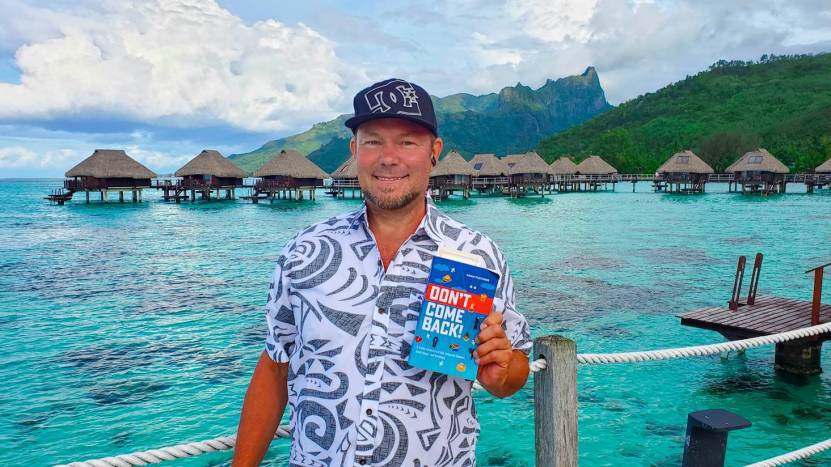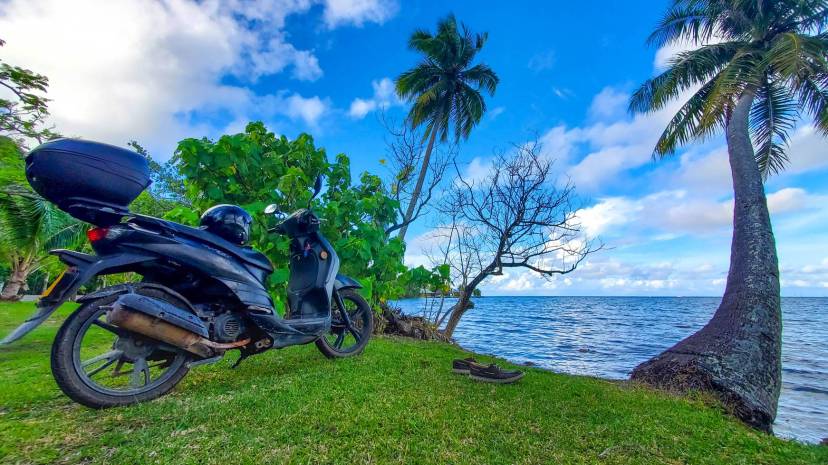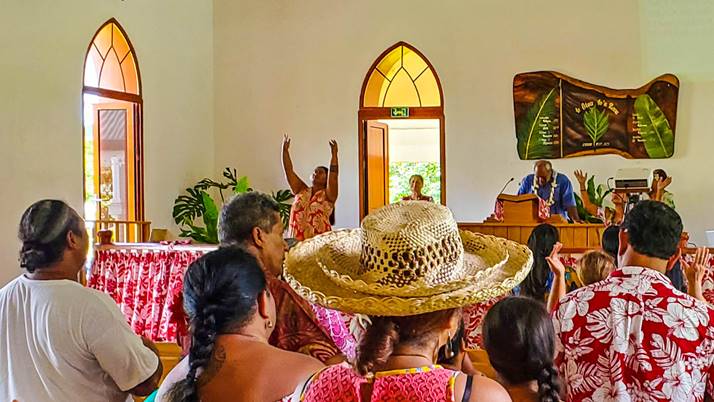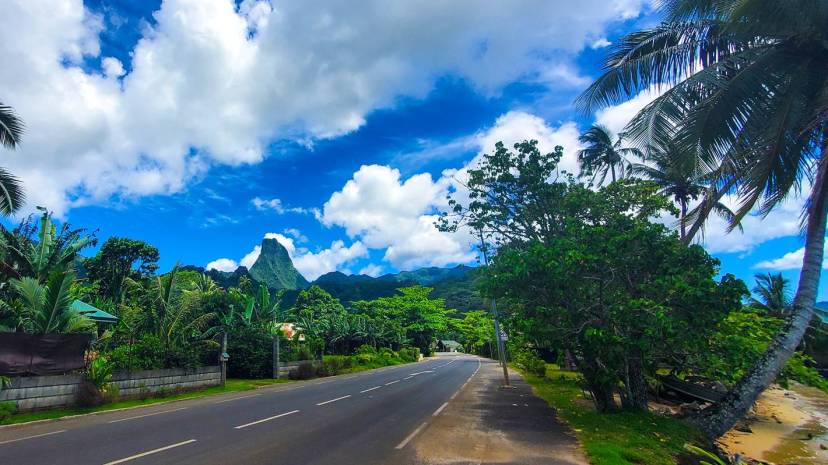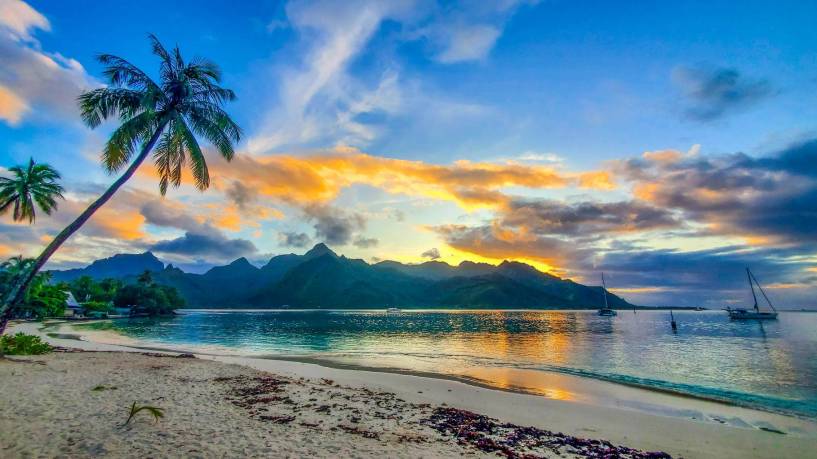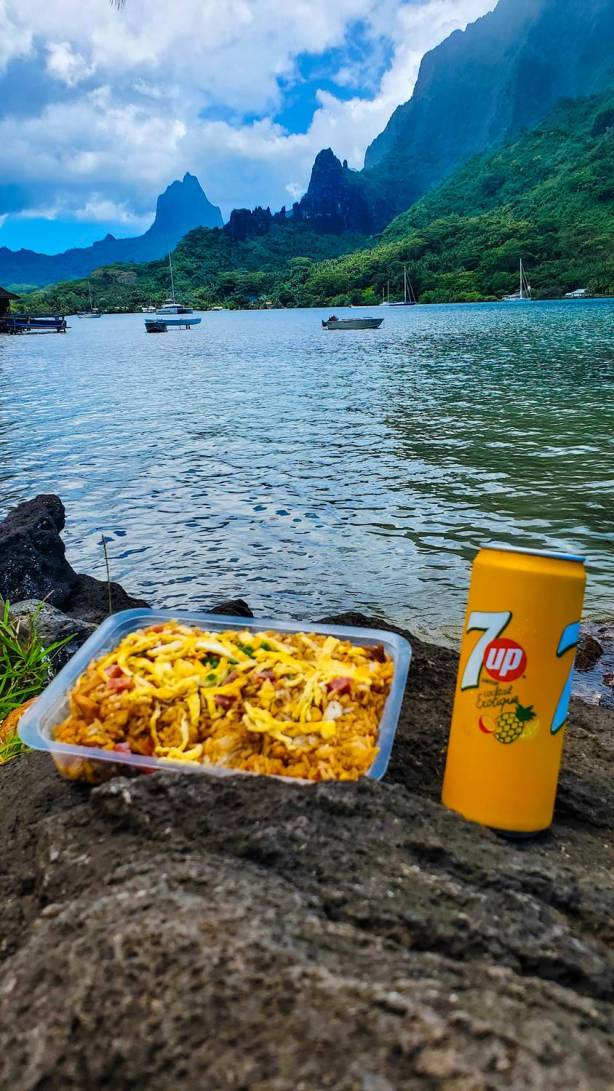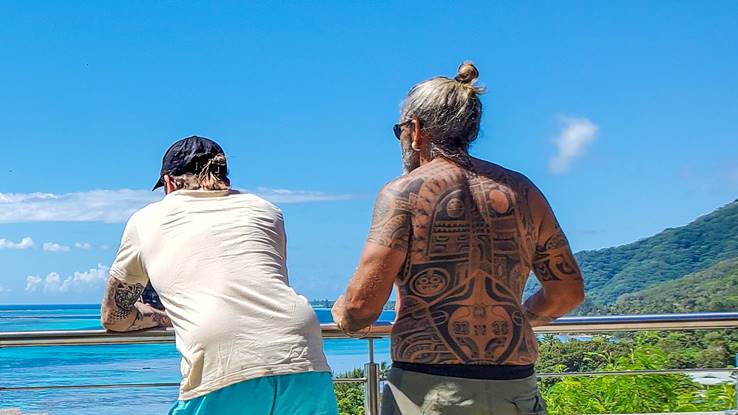I’m so happy to be back in action with international travel!
The Covid pandemic shut down travel for most of the world for a couple years; the last time I had travelled abroad was back in 2019.
This year, by the grace of God, I was able to visit a bucket-list destination. I never thought I’d be able to see French Polynesia any time soon, but by using airline points and staying in affordable accommodation, I was able to make this trip on a shoestring budget. This was also a unique trip because it is the first time in over 12 years that I’ve traveled alone and been completely sober. This is also my first blog post where I used some sprinkling of artificial intelligence to fill in some pieces.
I flew into Papeete (or Papeʻete) the capital of French Polynesia and also the biggest city in Tahiti and all the islands. I spent the night in an Airbnb and the next day walked the streets of the city admiring the diverse street art. Everywhere I walked, I saw amazing street art depicting French Polynesian culture.
Later that day, I hopped on a ferry to Moorea.
From the slideshow on the seatback during my Air Tahiti Nui flight:
“Tahiti would not have quite the same charm, without its sister island, Moorea, lying just across a 17 km wide ocean channel, linked daily by several ferry services. This high island is much smaller than its famous neighbor. The mountains are older and therefore have even harsher and more jagged outlines. Also raised up by volcanic activity, of which just the ridge-lines remain, the caldera taking up the greater area, leaving the valleys more accessible, making a destination of choice for hikers and eco-tourists.”
Exploring Moorea on a scooter was one of the most unforgettable experiences I’ve had. The freedom and flexibility of having my own transportation allowed me to discover the hidden gems of the island at my own pace. From the breathtaking views of the lush green mountains to the crystal-clear waters of the lagoon, every turn I took revealed a new and stunning vista. I was able to visit places that I wouldn’t have otherwise been able to access with a tour bus or taxi. I was able to take my time, stop and take in the beauty, and truly immerse myself in the island’s culture. (I used AI to help me write that!)
I felt that the scooter gave me a closer connection to the islands, rather than a typical tourist passing through.
I was blessed to be able to attend a local church service. I was the only person not of Polynesian descent, but I was welcomed by all and not made to feel like an outsider.
I rode the scooter to the highest point on the island, but while I was up there it started to rain – hard! AI would describe the experience thusly…
The rain was coming down in sheets, I could barely see in front of me as I drove the scooter down the road. I thought it would be fun to experience the rain and the wind. But now I was starting to regret my decision.
I finally made it to my destination, down the mountain, and on the coast. I was soaked to the bone, but I was alive. And I had survived riding a scooter in heavy rain in French Polynesia.
I was exhausted, but I felt a sense of accomplishment.
I spent most days basking in the sun or snorkeling around and being amazed at the vast number of tropical fish.
Mahi mahi is a popular fish in French Polynesia, and it’s easy to see why. The fish is firm and flaky, with a mild flavor that pairs well with a variety of sauces and marinades. It’s also a good source of protein and omega-3 fatty acids.
One of the best ways to enjoy mahi mahi in French Polynesia is in a poke bowl. Poke is a traditional Hawaiian dish made with raw fish, rice, and other ingredients. The fish is typically diced or sliced and marinated in a mixture of soy sauce, sesame oil, and other spices. It’s then served over rice with a variety of toppings, such as avocado, cucumber, and seaweed.
Many locals buy their food at gas stations. I picked up this chicken fried rice with pineapple guava 7-Up and ate it by the side of the road.
Tattoos are a very important part of the culture in French Polynesia. They are seen as a way to connect with one’s ancestors and to show one’s place in society.
Tattoos are typically done by hand with a traditional tool called a uhi. The uhi is a sharp piece of bone or bamboo that is dipped in ink and then tapped into the skin.
In recent years, there has been a resurgence of interest in traditional Polynesian tattoos. Many young people are getting tattoos as a way to connect with their heritage and show their pride in being Polynesian.
I found this great little poolside bungalow on Airbnb for the first half of my stay, and then a bed in a 10-bed dormitory for the second half.
Overwater bungalows are found in Moorea because the island is surrounded by a shallow lagoon. The lagoon is a perfect place to build overwater bungalows because it is calm and protected from the waves. The lagoon is also home to a variety of marine life, so guests can enjoy snorkeling and diving right from their bungalows.
Overwater bungalows were first built in the 1960s in the Maldives. The idea for overwater bungalows came from a Swedish architect who was inspired by the local fishing huts that were built on stilts over the water. Overwater bungalows quickly became popular with tourists, and they are now found in many tropical destinations around the world.
On my budget, I didn’t actually stay in an overwater bungalow, but as a tourist, I was able to walk all around them and get some photos…
Sharks are found in the waters around Moorea, but they are not a threat to humans. In fact, sharks are an important part of the marine ecosystem and play a vital role in keeping the fish population in check.
There are several different species of sharks that live in the waters around Moorea, including blacktip reef sharks, whitetip reef sharks, and lemon sharks. These sharks are all relatively small and do not pose a threat to humans.
I stood at the beach, looking out at the barrier reef and the vast expanse of the South Pacific Ocean beyond the breaking waves. The sun had risen, and the surrounding nature was ablaze with color.
I took the kayak out beyond the safety of the barrier reef that encircled the island.
I took a deep breath and held it, prayed to the One who knows my heart, then closed my eyes and let the ring slip from my finger.
I had been married for 10 years, but for the past few years, my marriage had been on the rocks. We had tried everything to make it work, but nothing seemed to help. It wasn’t my choice to dissolve the marriage.
So here I was, in a small kayak out beyond the barrier reef, throwing my wedding ring into the depths of the ocean. It was a symbolic gesture, a way of letting go of the past and moving on with my life.
I was ready to start a new chapter in my life. I was ready for whatever came next.
French Polynesia did not disappoint. I had always wanted to visit, and I’m amazed that God allowed me to make this journey. I would love to return in the future.
